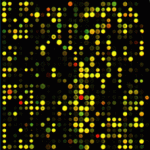Genomics
|
25 november 2014 02:07:27 |
| Comparative analysis of surface-exposed virulence factors of Acinetobacter baumannii (BMC Genomics) |
|
Tweet Background:
Acinetobacter baumannii is a significant hospital pathogen, particularly due to the dissemination of highly multidrug resistant isolates. Genome data have revealed that A. baumannii is highly genetically diverse, which correlates with major variations seen at the phenotypic level. Thus far, comparative genomic studies have been aimed at identifying resistance determinants in A. baumannii. In this study, we extend and expand on these analyses to gain greater insight into the virulence factors across eight A. baumannii strains which are clonally, temporally and geographically distinct, and includes an isolate considered non-pathogenic and a community-acquired A. baumannii.
Results:
We have identified a large number of genes in the A. baumannii genomes that are known to play a role in virulence in other pathogens, such as the recently studied proline-alanine-alanine-arginine (PAAR)-repeat domains of the type VI secretion systems. Not surprising, many virulence candidates appear to be part of the A. baumannii core genome of virulent isolates but were often found to be insertionally disrupted in the avirulent A. baumannii strain SDF. Our study also reveals that many known or putative virulence determinants are restricted to specific clonal lineages, which suggests that these virulence determinants may be crucial for the success of these widespread common clones. It has previously been suggested that the high level of intrinsic and adaptive resistance has enabled the widespread presence of A. baumannii in the hospital environment. This appears to have facilitated the expansion of its repertoire of virulence traits, as in general, the nosocomial strains in this study possess more virulence genes compared to the community-acquired isolate.
Conclusions:
Major genetic variation in known or putative virulence factors was seen across the eight strains included in this study, suggesting that virulence mechanisms are complex and multifaceted in A. baumannii. Overall, these analyses increase our understanding of A. baumannii pathogenicity and will assist in future studies determining the significance of virulence factors within clonal lineages and/or across the species. |
| 166 viewsCategory: Genomics |
 Transcriptional profiling reveals functional links between RasGrf1 and Pttg1 in pancreatic beta cells (BMC Genomics) Transcriptional profiling reveals functional links between RasGrf1 and Pttg1 in pancreatic beta cells (BMC Genomics)Using multi-way admixture mapping to elucidate TB susceptibility in the South African Coloured population (BMC Genomics) 
|
| blog comments powered by Disqus |
MyJournals.org
The latest issues of all your favorite science journals on one page
The latest issues of all your favorite science journals on one page



